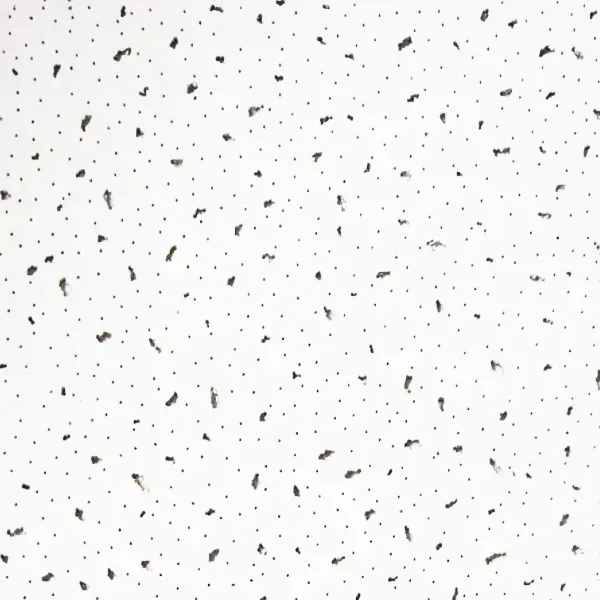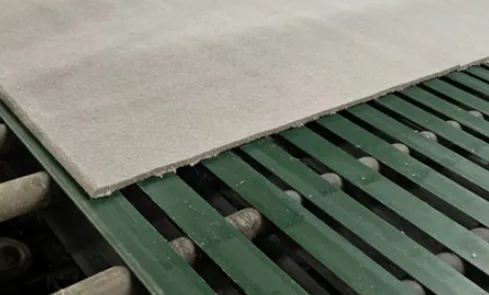- Afrikaanse
- Albanees
- Amhaars
- Arabisch
- Armeens
- Azerbeidzjaans
- baskisch
- Wit-Russisch
- Bengaals
- Bosnisch
- Bulgaars
- Catalaans
- Cebuano
- Corsicaans
- Kroatisch
- Tsjechisch
- Deens
- Nederlands
- Engels
- Esperanto
- Ests
- Frans
- Duits
- Grieks
- Nee
- Indonesisch
- Iers
- Italiaans
- Japans
- Koreaans
- TB
- Maleis
- Myanmar
- Noors
- Noors
- Pools
- Portugees
- Roemeense
- Russisch
- Servisch
- Spaans
- Zweeds
- Thais
- Turks
- Oekraïens
- Oezbeeks
- Vietnamees
apr . 11, 2025 14:49 Terug naar lijst
Difference Between Gypsum and PVC Ceiling
Modern architecture widely employs false ceilings for both functional and aesthetic purposes, with PVC and gypsum emerging as the leading materials, each offering distinct advantages. PVC laminated ceilings excel in moisture resistance, making them ideal for humid environments, while laminated gypsum ceiling board provides superior fire safety and acoustic performance. This comparison examines four critical factors: material properties, installation requirements, design potential, and long-term performance. The analysis empowers architects and designers to make informed choices by evaluating PVC’s cost efficiency and water resistance against gypsum’s design flexibility and fire protection capabilities.
Material Basic Difference Between Gypsum and PVC Ceiling
Gyproc PVC false ceiling consists of lightweight, durable plastic polymer panels available in various finishes, including smooth, textured, and wood-grain patterns. The inherent water resistance of PVC makes it particularly suitable for humid environments as it resists warping and deterioration.
Gypsum laminated ceiling tiles utilize natural gypsum powder compressed between paper layers, mounted on metal frameworks to create uniform surfaces. While gypsum provides excellent fire resistance and sound insulation, it demonstrates greater vulnerability to moisture damage compared to PVC.
Installation and Maintenance: Difference Between Gypsum and PVC Ceiling
PVC ceiling access panel installation proves relatively simple due to the material’s lightweight and customizable sizing. Many PVC systems feature interlocking mechanisms that facilitate assembly. For example, PVC laminated false ceiling. Maintenance involves simple cleaning with damp cloths, eliminating the need for repainting or refinishing.
Laminated gypsum board installation requires more complex metal framework construction before securing the gypsum boards. The process includes taping and sealing joints for smooth finishes. Though aesthetically pleasing, laminated gypsum ceiling board demands more maintenance in humid conditions to prevent sagging or mold, with periodic repainting often necessary.
Sustainability Difference Between Gypsum and PVC Ceiling
PVC demonstrates exceptional durability with resistance to moisture, pests, and corrosion, maintaining its appearance for years with minimal care. That’s why Xingyuan does PVC-laminated gypsum ceiling tile design. Environmental concerns exist regarding its synthetic composition and potential chemical release during production and disposal.
As a natural material, gypsum offers better environmental sustainability with non-toxic, recyclable properties. And Xingyuan designed gypsum tile 238 for full use of gypsum. While durable in normal conditions, moisture exposure can compromise its structural integrity, requiring proper installation and maintenance for maximum lifespan.
Financial Costs: Difference Between Gypsum and PVC Ceiling
PVC in PVC laminated ceiling tiles emerges as the more economical choice, with lower material and installation costs due to its lightweight nature and simpler installation process, making it suitable for large projects.
Gypsum in laminated gypsum ceiling tiles commands higher prices, reflecting its premium appearance, with costs encompassing specialized labor for installation and finishing. Additional expenses may accrue from necessary maintenance in humid environments.
The selection of the difference between gypsum and PVC ceilings should consider specific needs, budget constraints, and environmental factors. So do different kinds of fiber tiles. PVC provides practical, cost-effective solutions for functional spaces, while gypsum offers superior design possibilities and safety features for premium applications. Understanding these material characteristics enables homeowners and designers to make choices that successfully balance practicality with visual appeal.
Xingyuan innovatively combines the advantages of both PVC and gypsum to create versatile ceiling solutions for modern living. Our PVC-coated gypsum ceiling tiles exemplify this synergy, delivering enhanced safety features while maintaining perfect visual harmony within interior spaces. This dual-benefit approach allows you to select products that precisely match your specific requirements-whether prioritizing fire resistance, moisture protection, or aesthetic appeal.

-
Transform Interiors with PVC Gypsum Ceiling: A Stylish, Durable, and Moisture-Resistant SolutionNieuwsMay.19,2025
-
The Smart Interior Upgrade: Discover the Durability and Versatility of Gypsum Ceiling Access Panel SolutionsNieuwsMay.19,2025
-
The Smart Choice for Interior Design: Discover the Value of PVC Gypsum Ceiling SolutionsNieuwsMay.19,2025
-
Mineral Fiber Ceiling Tiles: The Smart Blend of Performance and AestheticsNieuwsMay.19,2025
-
Mineral Fiber Ceiling Tiles: The Superior Choice Over Gypsum for Sound and Fire SafetyNieuwsMay.19,2025
-
Mineral Fiber Ceiling Tiles: Eco-Friendly Strength and Style for Every CeilingNieuwsMay.19,2025
aug . 31, 2024 02:58 Terug naar lijst
Difference Between Gypsum and PVC Ceiling | Pros & Cons
Understanding the Differences Between Gypsum and PVC Ceilings
When it comes to choosing a ceiling material for your home or commercial space, two popular options are gypsum and PVC (polyvinyl chloride) ceilings. Both materials have their own unique features, advantages, and drawbacks, making them suitable for different applications based on specific needs and preferences.
Composition and Structure
Gypsum ceilings are made from gypsum board, which is a panel consisting of a core of gypsum (calcium sulfate dihydrate) sandwiched between two layers of durable paper or fiberglass mat. This material is known for its fire resistance and sound insulation properties. In contrast, PVC ceilings are made from synthetic plastic, often produced in various designs, colors, and patterns. They are lightweight and flexible, making them easy to install.
Durability and Maintenance
One of the significant differences between the two materials is their durability. Gypsum ceilings are robust and can withstand certain impacts, but they are susceptible to water damage, which may lead to sagging or mold growth if not properly maintained. Conversely, PVC ceilings are highly resistant to moisture, making them ideal for areas with high humidity, such as bathrooms and kitchens. They are easy to clean, requiring minimal maintenance; a simple wipe with a damp cloth often suffices to keep them looking fresh.
difference between gypsum and pvc ceiling

Aesthetic Appeal and Design Flexibility
When it comes to aesthetics, both gypsum and PVC ceilings offer a range of designs. Gypsum boards can be painted or textured, providing a seamless look that can complement various interior styles. On the other hand, PVC ceilings are available in an extensive array of colors, patterns, and styles, including glossy and matte finishes, allowing for greater customization and design flexibility.
Cost Considerations
Cost is another crucial factor in choosing between gypsum and PVC ceilings. Generally, gypsum ceilings can be more expensive, not only in terms of material costs but also due to the installation process, which may require professional assistance. In contrast, PVC ceilings tend to be more budget-friendly, both regarding materials and installation, as they can often be installed as a DIY project.
Conclusion
In summary, while both gypsum and PVC ceilings offer distinct advantages, the choice ultimately depends on the specific needs of your space, including factors such as moisture levels, maintenance preferences, aesthetic goals, and budget. By understanding the differences between these materials, you can make an informed decision that enhances your interior while providing the longevity and functionality you desire.
-
Transform Interiors with PVC Gypsum Ceiling: A Stylish, Durable, and Moisture-Resistant SolutionNieuwsMay.19,2025
-
The Smart Interior Upgrade: Discover the Durability and Versatility of Gypsum Ceiling Access Panel SolutionsNieuwsMay.19,2025
-
The Smart Choice for Interior Design: Discover the Value of PVC Gypsum Ceiling SolutionsNieuwsMay.19,2025
-
Mineral Fiber Ceiling Tiles: The Smart Blend of Performance and AestheticsNieuwsMay.19,2025
-
Mineral Fiber Ceiling Tiles: The Superior Choice Over Gypsum for Sound and Fire SafetyNieuwsMay.19,2025
-
Mineral Fiber Ceiling Tiles: Eco-Friendly Strength and Style for Every CeilingNieuwsMay.19,2025







